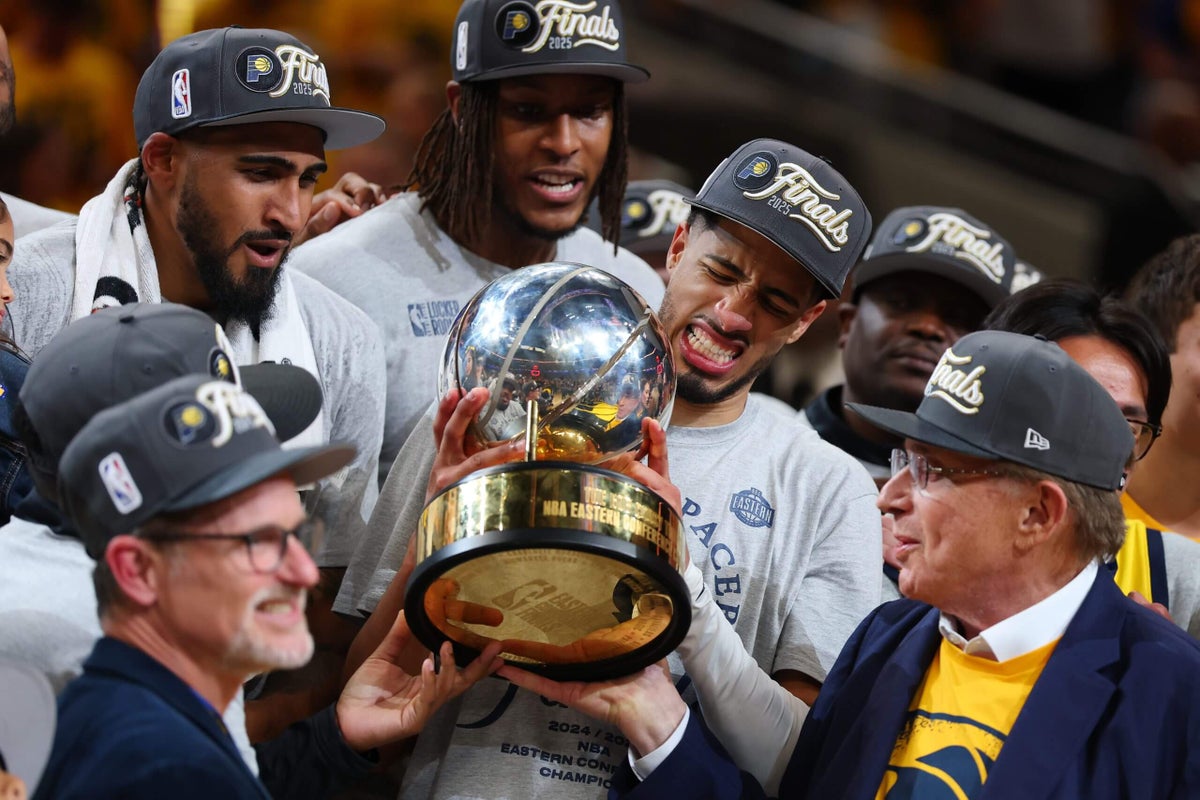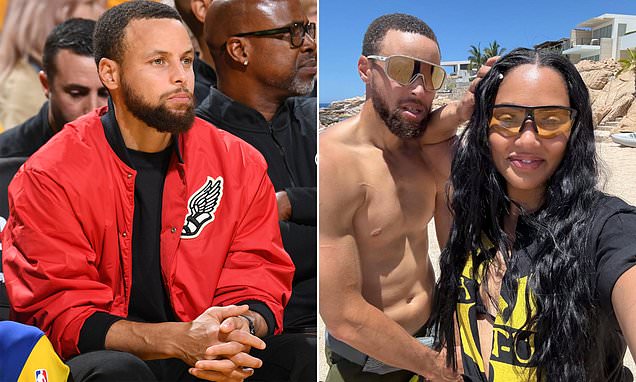
INDIANAPOLIS — The Indiana Pacers went to Paris this season.
The French sports media are a reverent bunch, so it would be wrong to say that the Pacers were treated like the Washington Generals, Reggie Strickland (I admit I had to look him up, but he lost 276 out of 363 career boxing matches, so you can see where this is headed) or Prairie View A&M.
Advertisement
But whether it was in Accor Arena while the games were going on, or just about anywhere else in the French capital that week in January, the Pacers were definitely a sidebar to the main act — the San Antonio Spurs and Victor Wembanyama. Of course this makes sense to a degree, as Wemby is a Parisian and this was his triumphant homecoming with his NBA team, so his presence was always going to drive the news.
But also, the Pacers, at the time, were still kinda, sorta, just, lacking. They had started to win a few games here and there and were a couple above .500 when landing at De Gaulle, and yes, it was Tyrese Haliburton’s first trip to the city since winning a gold medal at the Paris Olympics with USA Basketball the previous summer, but Indiana simply was not at a point where it was inspiring much excitement or confidence among fans and onlookers.
Naturally, the Spurs finished 34 games out of first and Wembanyama missed the last two months with a blood clot, and the Pacers are, of course, headed to the NBA Finals.
“This isn’t a surprise to any of us because of what we wanted to do,” Haliburton said.
To anyone who has watched the Pacers play LATELY, no, their finals berth is not a surprise. They play a relentless, fast-paced, full-court style where they pressure the ball in the backcourt and, on offense, throw it ahead as soon as possible. They have a competent, reliable bench, two stars in Haliburton and Pascal Siakam, and role players who seem to have been carved out of a marble slab by Michelangelo to fit perfectly around Haliburton and Siakam. This is how they dumped the Milwaukee Bucks (with Giannis Antetokounmpo) and the No. 1 Cleveland Cavaliers, both in five games, then beat the New York Knicks in a more competitive six-game series.
But to the more casual follower — the kind who might make a face that the NBA Finals features teams from Oklahoma City (“omg, cow pasture USA,” a TikTok-er might say) and Indianapolis (“Is Peyton Manning still there,” a … well, I’m out of jokes here, so something someone ill-informed might say), or to the kind who spent the whole season reading and hearing that the East was owned by Cleveland and Boston and no one else is in the discussion — yes, the Pacers are a surprise.
Advertisement
Did you know that Indiana started the season with a 10-15 record? Or that Haliburton opened the season in the worst slump of his career, posting five games of fewer than 10 points when he made less than 26 percent of his shots from opening night through Dec. 1? That’s how a player can not make the All-Star team but wind up on one of three All-NBA teams in the same season.
A team five games under .500 through 25 games, with its best player scuffling like that, typically doesn’t make an NBA Finals.
“Me personally, I had my struggles, many guys had their struggles,” Haliburton said after Saturday’s closeout of the Knicks. “I think as a group, we just leaned on each other. And that’s the most special part about this group. These guys in the locker room are gonna be my brothers for life. And what they’ve done for me, I can’t even really put into words because you know where I was earlier in the year was really, really tough for me.”
While Haliburton was going through it, the Pacers missed Andrew Nembhard, Aaron Nesmith and bench player Ben Sheppard for large swaths early in the season. As coach Rick Carlisle pointed out, the Pacers were giving key minutes to players on two-way contracts, youngsters who needed more seasoning in the G League, but the Pacers had no other options.
Indiana was also in the midst of overhauling its defense, learning how to execute simpler yet more aggressive schemes with a personnel better suited to defend than the team the Pacers put on the floor in 2023-24 — a team that, yes, made the Eastern Conference finals despite its defensive struggles.
As the Pacers got healthy, the defensive work began to catch on. They finished 14th in the league on defense, which, for a team with a national reputation for playing no defense at all, was a marked improvement. That’s kind of how they went 40-15 to close the regular season.
Advertisement
“Getting to the NBA Finals is an accomplishment,” Carlisle said. “But if you start looking at it (the finals) that way, you’ll go into it with the wrong mindset. Our defense is something we’ve been working on steadfastly for over a year and a half. … The guys co-signed on the importance of defense, and everybody has participated in the growth.”
The Pacers have been compared favorably to a college team because of the full-court pressure they apply for virtually the entire game. Indiana knows that Oklahoma City plays a similar style, and, at least during the regular season, was much better at it — the Thunder’s 68 wins stand as one of the great NBA regular seasons.
The depth the Pacers rely on has been challenged, as Nesmith, Tony Bradley and Jarace Walker suffered leg injuries during the series. While Nesmith never missed a game and Bradley should be ready for the finals, Walker left the arena after Saturday night’s conference finals clincher on crutches.
All of which is to say, Indiana is well aware of the challenge that the Thunder will present. The league MVP, Shai Gilgeous-Alexander, is on that side, as is fellow All-Star Jalen Williams. Oklahoma City has two additional strong wings besides Williams in Lu Dort and Alex Caruso, and two capable, versatile bigs in Chet Holmgren and Isaiah Hartenstein.
“I think it’s a new blueprint for the league,” said Myles Turner, the longest-tenured Pacer. “I think the years of the super teams and stacking, it’s just not as effective as it once was, you know what I mean? Since I’ve been in the league, the NBA has been very trendy; it just shifts. But the new trend now is just kind of what we’re doing. OKC does the same thing — young guys get out and run, defend and use the power of friendship.”
For hours after the Pacers dismissed the Knicks in Game 6, the streets of downtown Indianapolis sounded like race day at the Motor Speedway. Engines revving on the streets, thousands of people drinking beers on the sidewalks, shouting to each other and at cars they believed were carrying Pacer players. A small group stationed itself outside the Pacers parking lot and shouted “SUV!” as a black SUV with tinted windows pulled out into the night. Was it Siakam, the actual Eastern Conference finals MVP, or was it Haliburton? Who can say?
It was a celebration for a fan base that had not seen its basketball team get this far in 25 years. The players and coaches? They were happy, yes, but already thinking of what lies ahead.
Advertisement
The Thunder play how they play, except, at least on paper, an NBA analyst would say Oklahoma City has better players.
Of course, that’s what we might have said back in January, looking at a Global Games matchup between the Spurs and Pacers when no one was counting on the Pacers for much of anything.
“I just love the fact that everyone just stayed to the grind and we just kept working and you’re trusting the process,” Siakam said. “I think it just took us slowly to another level and the fact that we connected all together, like, that’s what makes it special.
“We don’t quit.”
(Photo: Gregory Shamus / Getty Images)

